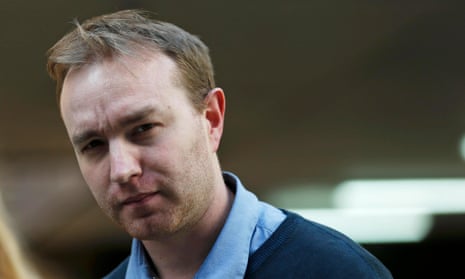Tom Hayes, a former trader on trial for alleged interest-rate rigging, described the broking market he worked in as the wild west, a place with no rules and where relationships relied on lavish entertainment, a court has heard.
The court was told on Tuesday that it was this high-pressure environment which took its toll on Hayes, prompting him to threaten brokers and pick fights with colleagues to move interest rates to aid his trading.
Hayes denies eight counts of conspiracy to defraud between August 2006 and September 2010. Prosecutor Mukul Chawla, prosecuting, has said Hayes had made “complete confessions” to investigators during 82 hours of interviews after his arrest in December 2012. He had initially agreed to plead guilty and gave evidence against former peers and colleagues to become eligible for a lighter sentence.
The trial heard on Tuesday how Hayes, a former UBS and Citigroup yen derivatives trader, threatened to drop brokers if he felt they failed to help persuade traders at other banks to move benchmark interest rates in directions that suited his trading book.
Hayes is the first person to stand trial for alleged manipulation of the London interbank offered rate, or Libor, which is used to price an estimated $450tn (£288tn) of financial contracts worldwide. British prosecutors claim Hayes was the ringmaster in a conspiracy with 25 staff from at least 10 banks and brokerages to rig the interest-rate benchmark.
Hayes also said he was open about his trading methods, which were backed by senior staff, and that Libor manipulation was widespread across the industry as banks tried to boost trading positions or the perception of their solvency during the 2008-2009 financial crisis.
The prosecution presented evidence, including computer chat and telephone calls between traders and brokers, which, they argued, showed how the banks worked together to drop their six-month yen-denominated Libor rates in July and August 2009.
“I want some heroics from the boys on August 11,” Hayes had announced to a broker on 27 July 2009. “I need a lot lower 6m [six month]. We [UBS] will help. So will some of my mates.”
Hayes told investigators in evidence presented to the jury that bank compliance departments had never trained him on Libor. In the evidence, Hayes also said that many banks chose how to help to set rates according to a “collaborative process to make it the most advantageous for the bank”.
In the world of trading, Hayes told investigators, a base salary was so irrelevant that traders said they “worked for free” if they failed to get a bonus. The trial continues.
